Written by Binance Research
Compiled by: Chopper, Foresight News
In the first half of 2025, the crypto market showed a volatile pattern of "first decline and then rise": the total market value fell by 18.61% in the first quarter, rebounded by 25.32% in the second quarter, and finally increased slightly by 1.99% year-on-year in the first half of the year.
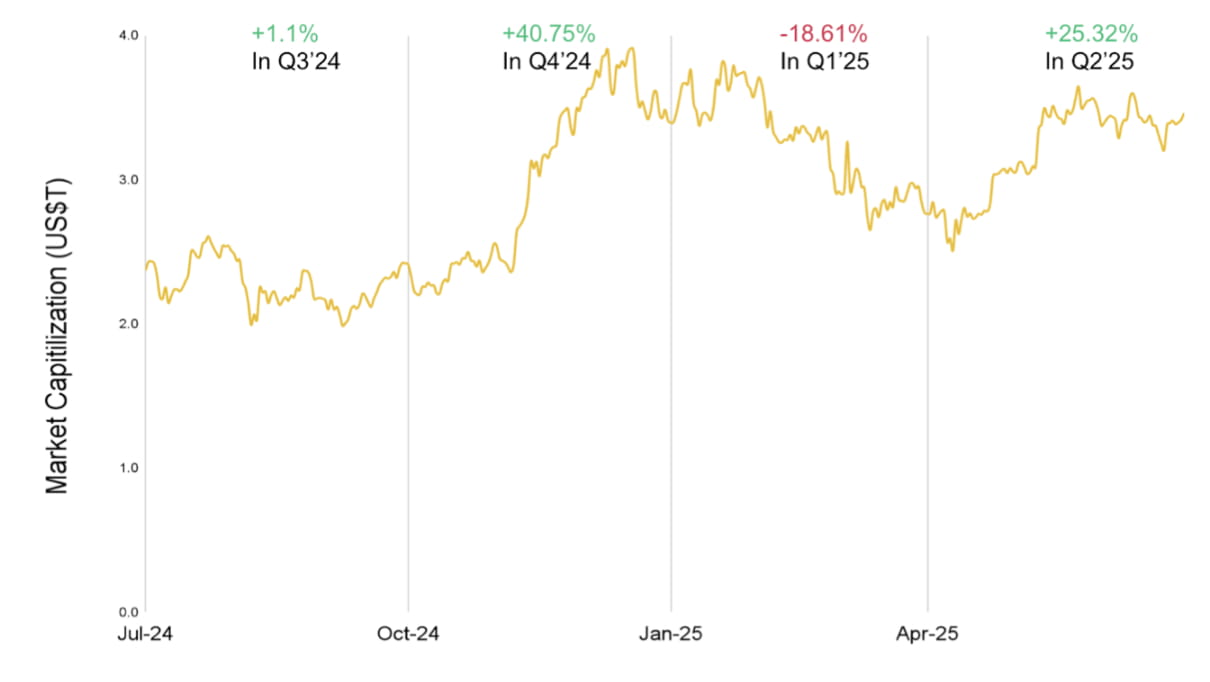
Year-to-date, the total crypto market value is up 1.99%
This dynamic stems from a number of factors:
In the second half of 2024, the Fed’s rate cuts and expectations of regulatory easing after the U.S. election pushed the market to $3 trillion;
Sticky inflation, weak economic data and widespread tariffs implemented by the Trump administration in April weighed on sentiment in early 2025;
The recent suspension of tariffs and improved regulatory clarity for stablecoins and DeFi have driven market recovery.
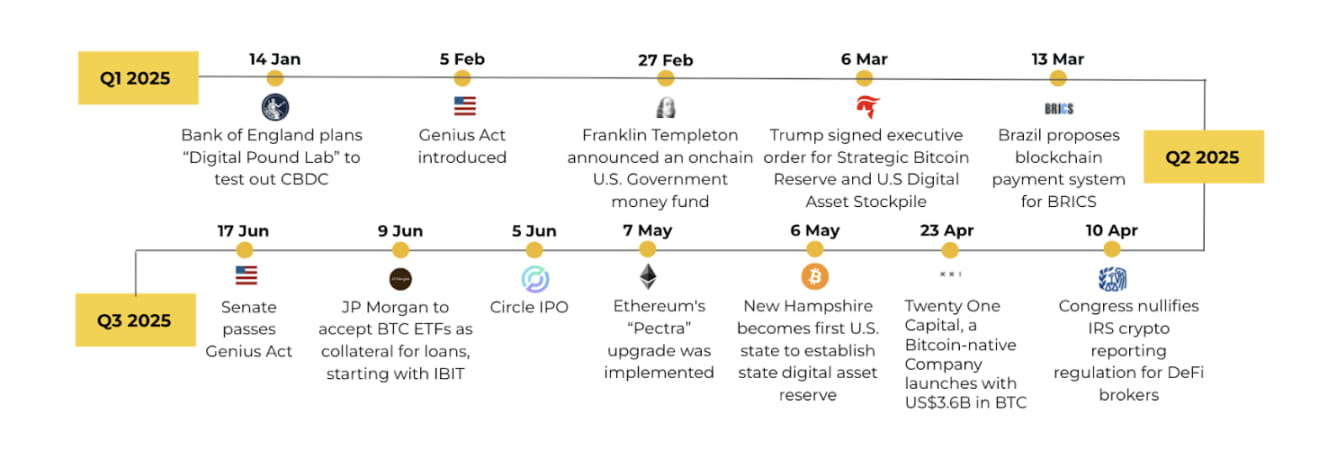
Timeline of important events in the first half of 2025
The core narrative of the crypto market in the first half of the year focused on Bitcoin investment tools, stablecoins, AI agents, and tokenized real-world assets (RWA). Looking ahead, global monetary policy, trade tariff dynamics, institutional entry, the integration of cryptocurrency and AI, and a new round of crypto IPOs after Circle will become key highlights.
1. Macroeconomic Background and Market Performance
The Great Divergence of the Global Economy
Economic trends diverged: the U.S. economy gradually slowed down, with the unemployment rate stabilizing at 4.1%, but the job market cooled; China's GDP grew 5.4% year-on-year in the first quarter, exceeding expectations, benefiting from stimulus policies; the economies of the eurozone and Japan recovered steadily.
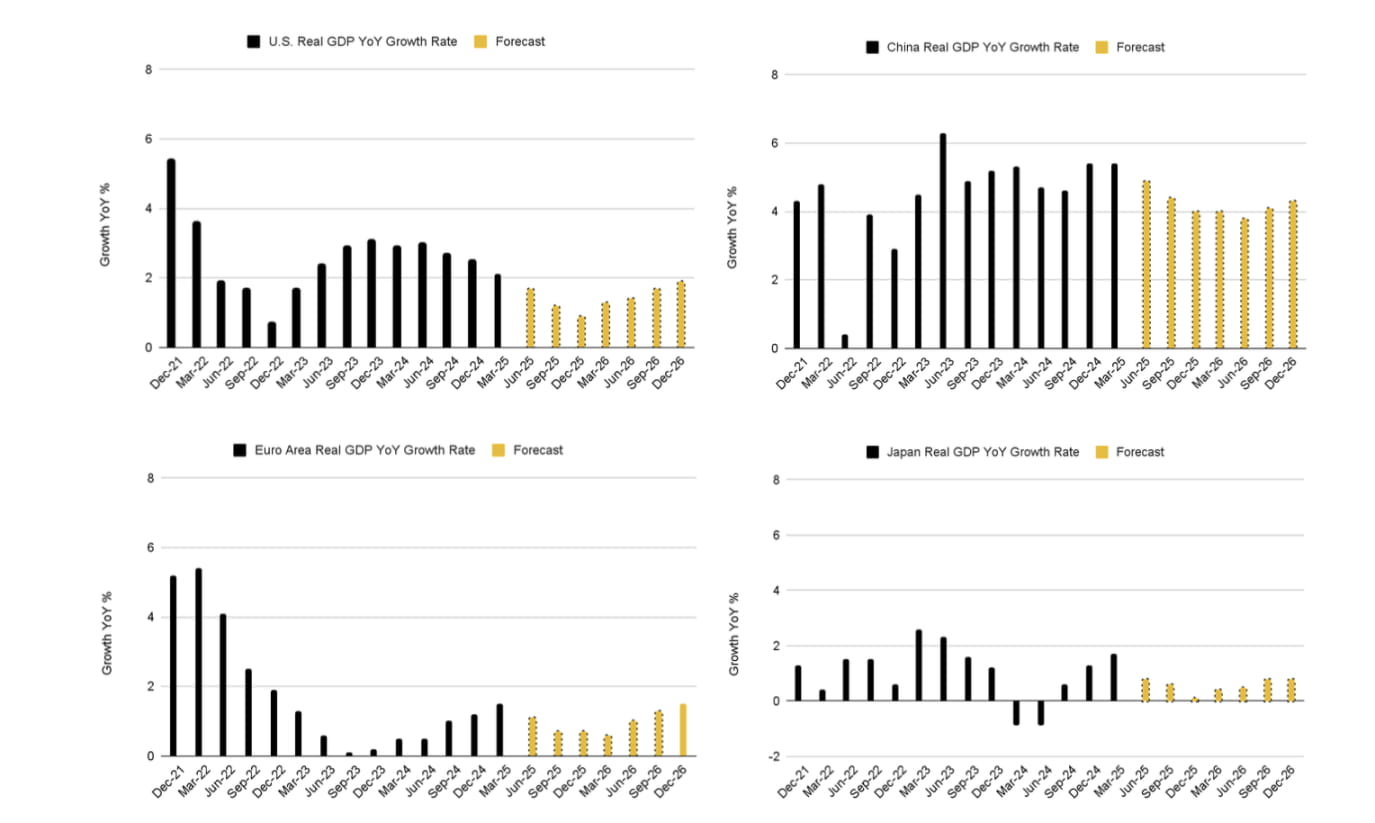
G4 countries quarterly GDP performance and market forecasts
Loose liquidity: The money supply of the four major economies of the United States, China, Europe and Japan increased by a total of US$5.5 trillion, the largest half-year increase in four years, driving a rebound in risk asset sentiment.
Geopolitical shocks: The brief U.S.-China trade war led to tariffs surging to 145%, exacerbating market volatility.
Bitcoin’s “High Beta Attribute”
Bitcoin has returned 13% year-to-date, outperforming most traditional stock indices, and its market capitalization remains above $2 trillion. Its price cycle is seen as a leading indicator of the global manufacturing cycle (leading by 8-12 months), suggesting that there may be opportunities in the second half of 2025.
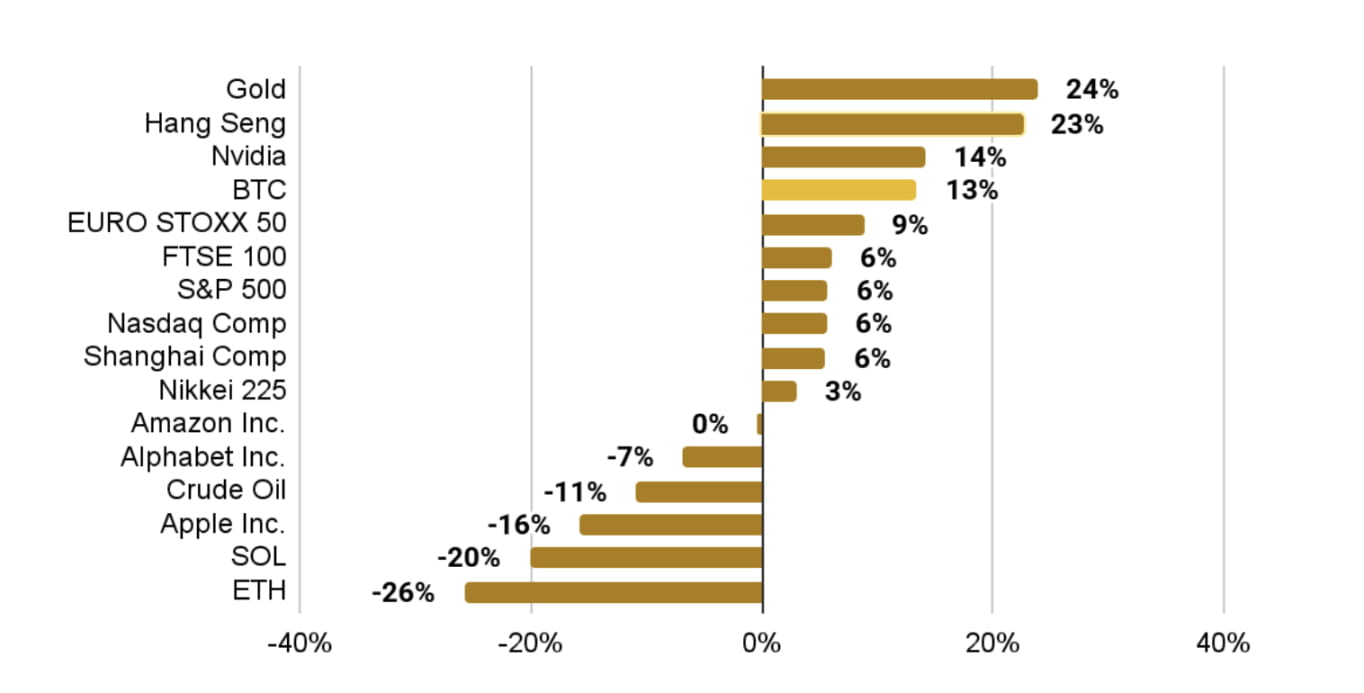
Year-to-date returns of some major global assets
2. Performance of core assets: Bitcoin and public chain ecosystem
Bitcoin ecosystem matures
Institutional entry is accelerating: spot ETFs have accumulated net inflows of over US$13.7 billion, with BlackRock's IBIT dominating the market; over 140 listed companies hold 848,000 BTC, an increase of over 160% over last year.
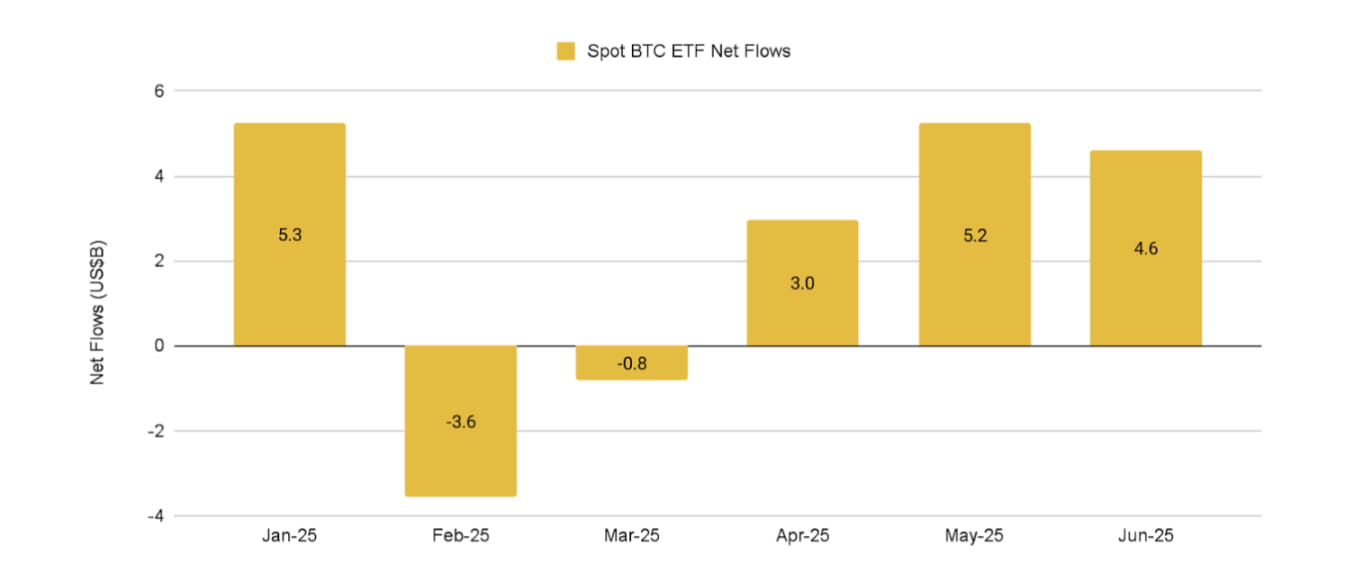
Spot Bitcoin ETFs have attracted more than $13.7 billion in net inflows year-to-date
Ecosystem innovation and differentiation: Layer2 solutions (such as Stacks and BitVM) promote expansion, and BTCFi's total locked value (TVL) reaches US$6.5 billion, up 550% year-on-year; but speculation on Bitcoin native assets such as Ordinals and Runes cools down, and daily trading volume drops to an 18-month low.
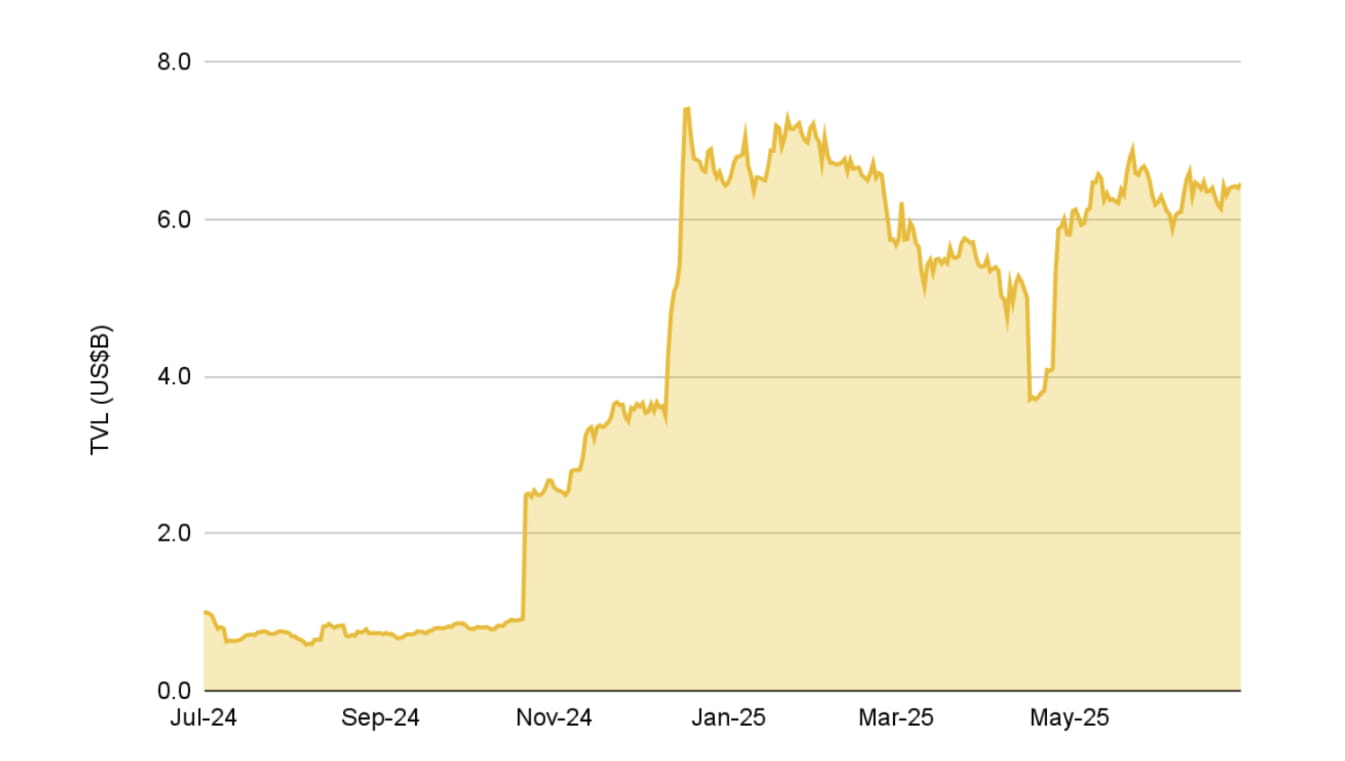
Market dominance: Bitcoin’s dominance rate peaked at 65.1%, a four-year high, highlighting its core asset status.
Mainstream public chain dynamics
Ethereum: ETH price fell 26%, but the ecosystem's resilience was highlighted. Pectra upgrade improved staking efficiency (the maximum balance of a single verification node increased from 32 ETH to 2048 ETH), and the staking volume reached 35.4 million ETH (accounting for 29.3% of the circulation); Layer2 (Base, Arbitrum, etc.) processed more than 90% of transactions and became the main expansion carrier.
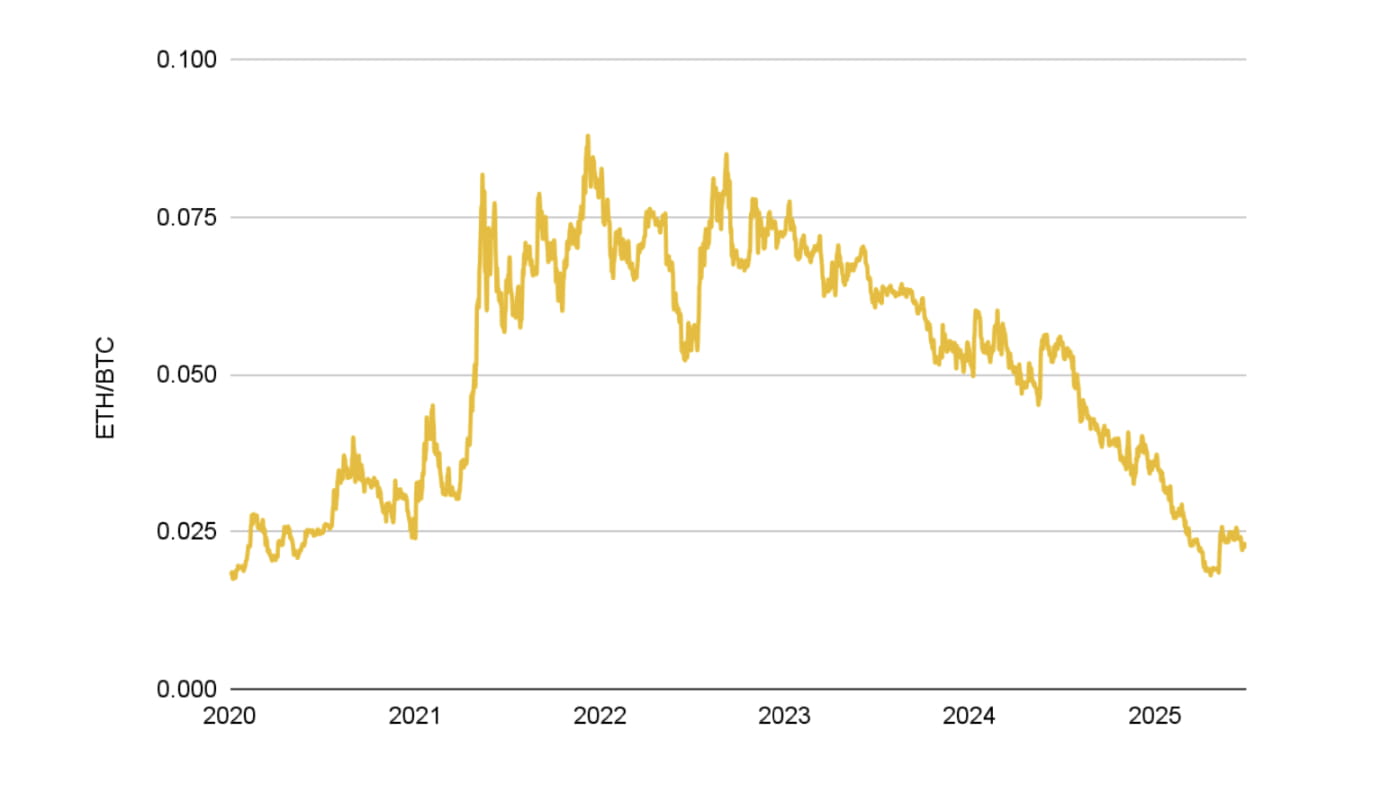
Ethereum to Bitcoin exchange rate fell to 0.023, a multi-year low, data as of June 30, 2025
Solana: Continues to maintain high throughput (99 million transactions per day), stablecoin market value reaches 10.9 billion US dollars, surpassing BNB Chain; institutional attention increases, and many asset management companies apply for spot SOL ETF, which is expected to be approved by mid-year.
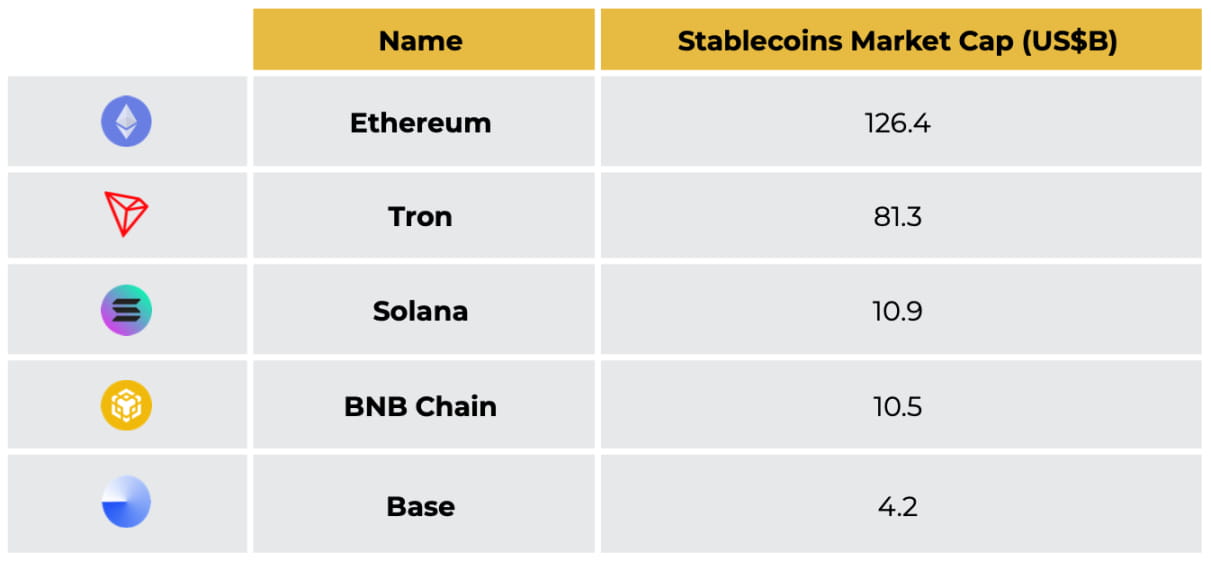
Market capitalization of stablecoins on major public chains, data as of June 30, 2025
BNB Chain: DEX transaction volume hit a record high, of which PancakeSwap contributed more than 90%; through upgrades such as Pascal and Lorentz, the block time was shortened to 0.8 seconds, and the ecosystem expanded to Memecoin, RWA and AI fields, with daily active addresses reaching 4.4 million.
3. DeFi and Stablecoins: From Speculation to Practicality
DeFi enters a mature stage
Core data: TVL stabilized at US$151.5 billion, monthly active users reached 340 million (year-on-year +240%), and the proportion of DEX spot trading volume rose to 29%, reaching a historical high.
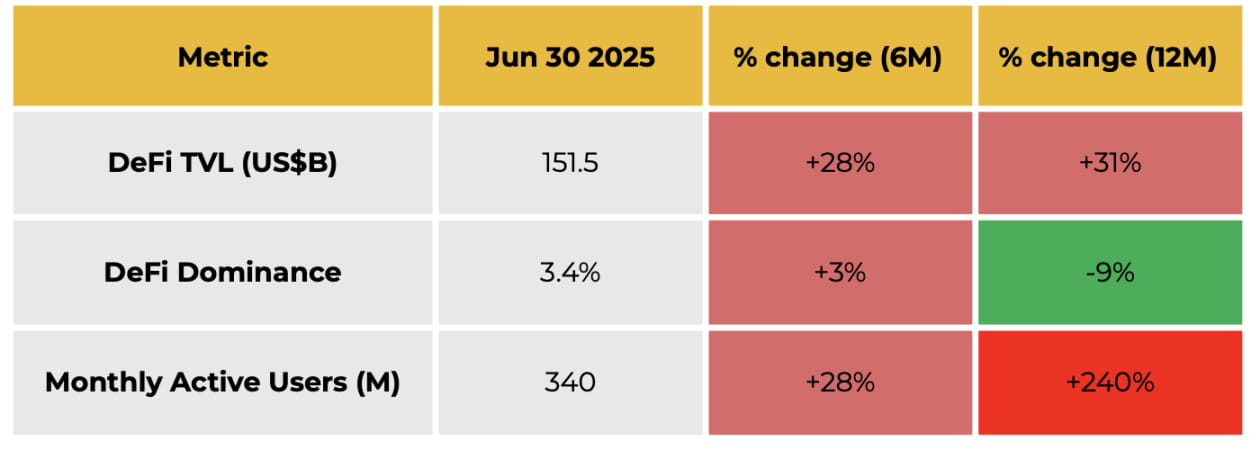
Changes of major DeFi indices in half a year and a year
Key trends:
RWA exploded: the value of real-world assets on the chain reached 24.4 billion US dollars, with private credit accounting for 58%, becoming an important bridge connecting TradFi and DeFi.
Prediction market breakthrough: Polymarket cooperates with social platform X, with transaction volume exceeding US$1.1 billion in June and 400,000 monthly active users, becoming an information analysis tool.
Liquidity stratification: Ethereum dominates institutional-level assets (heavy staking, RWA), Solana focuses on retail transactions, and BNB Chain attracts traffic with Memecoin and zero gas fee activities.
Stablecoin mainstreaming accelerates
Market structure: The total market value exceeded 250 billion US dollars, and USDT (153-156 billion US dollars) and USDC (61.5 billion US dollars) formed a duopoly, accounting for a total of 92.1%.
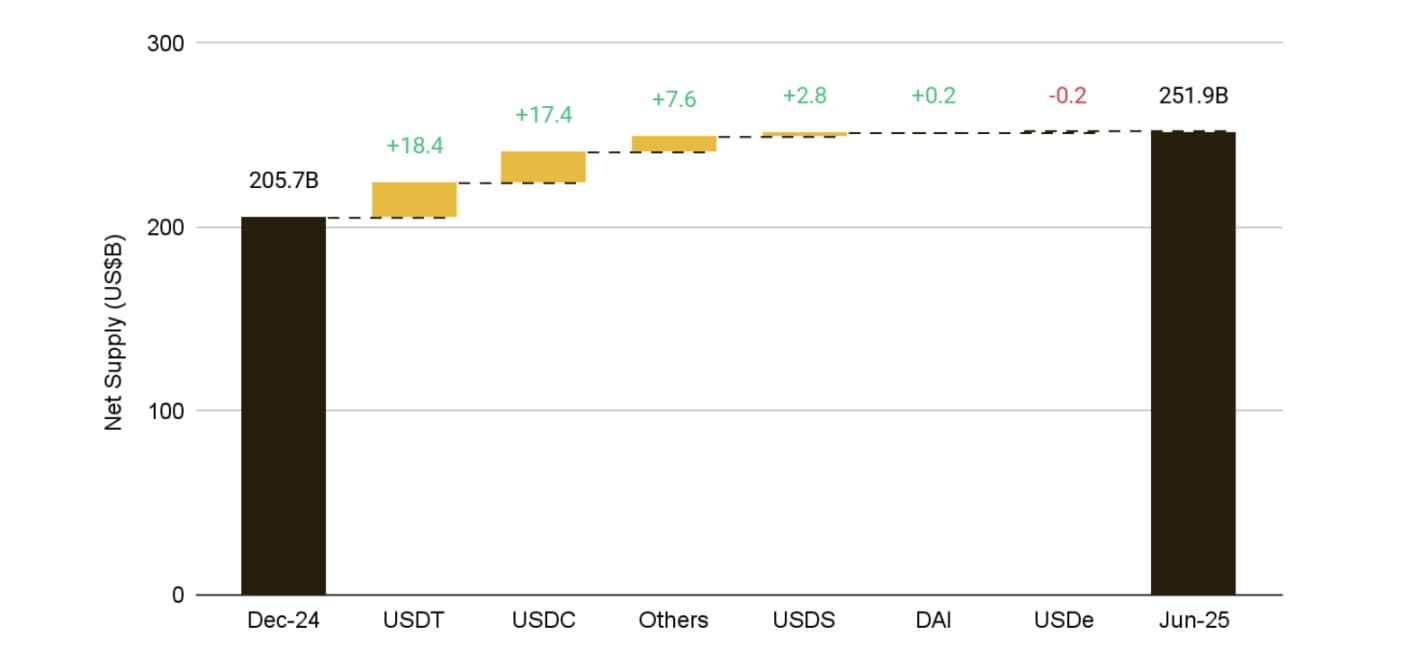
The total supply of stablecoins has increased by more than 22% this year, setting a new high
Key developments:
Institutional adoption: Circle went public on the New York Stock Exchange through an IPO, raising over $600 million; JPMorgan Chase, Société Générale and others launched bank-based stablecoins; Walmart and Amazon explored their own stablecoins to reduce payment costs.
Regulatory clarification: The US (GENIUS Act) was passed and the EU MiCA was fully implemented, providing a compliance framework for stablecoins and promoting them to become cross-border payment and settlement infrastructure.
IV. Institutional Admission
TradFi integration: 60% of Fortune 500 companies deploy blockchain; JPMorgan Chase launches JPMD, a deposit token based on Base; Apollo Global Management tokenizes $785 billion of credit funds on Solana.
Asset tokenization: The on-chain movement of traditional assets such as stocks and bonds is accelerating. Backed Finance’s xStocks and Dinari’s dShares support 24/7 trading. Robinhood launches synthetic stock derivatives in the EU.
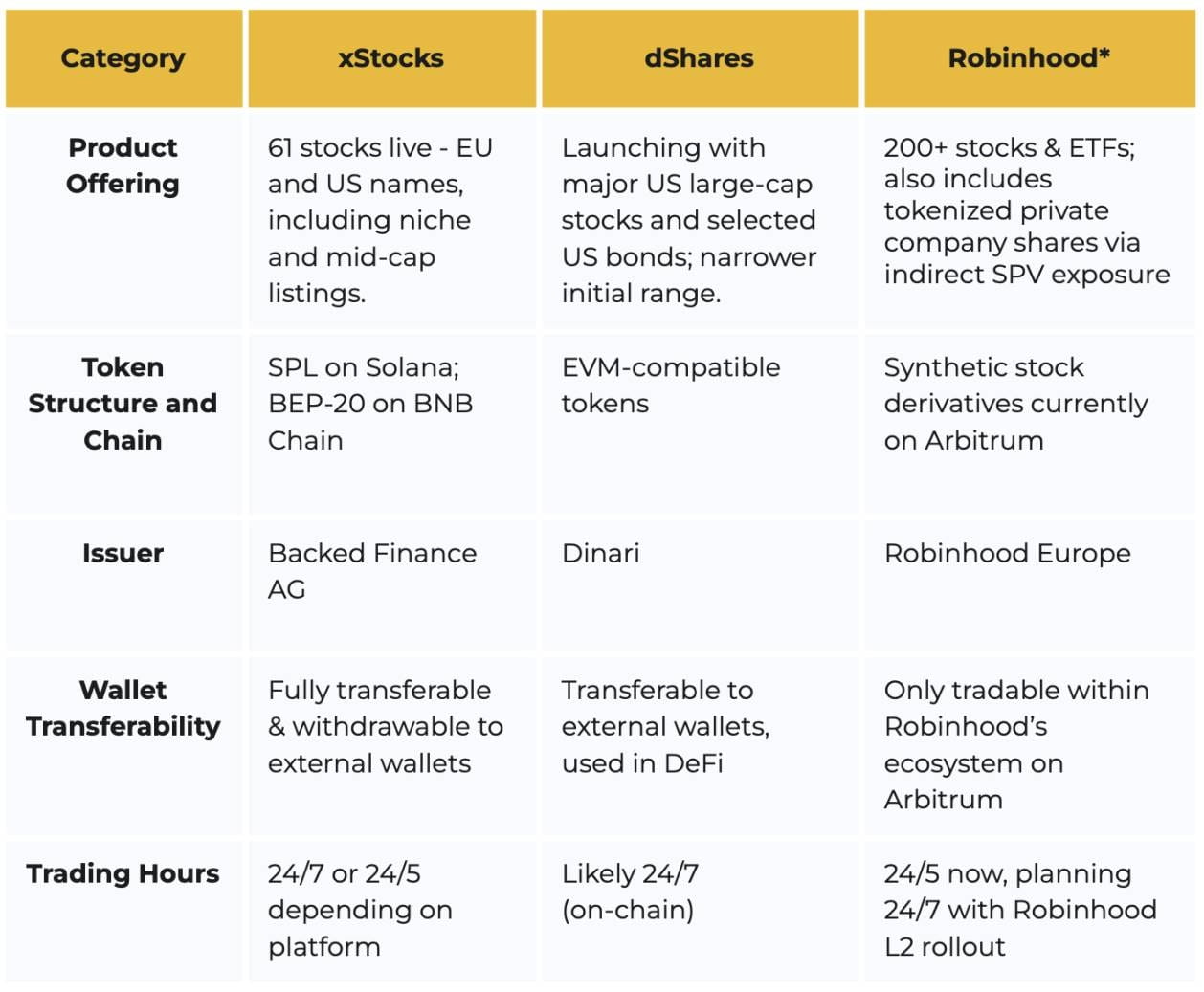
Comparative Analysis of xStocks, dShares, and Robinhood Tokenized Stock Offerings
V. Regulatory landscape
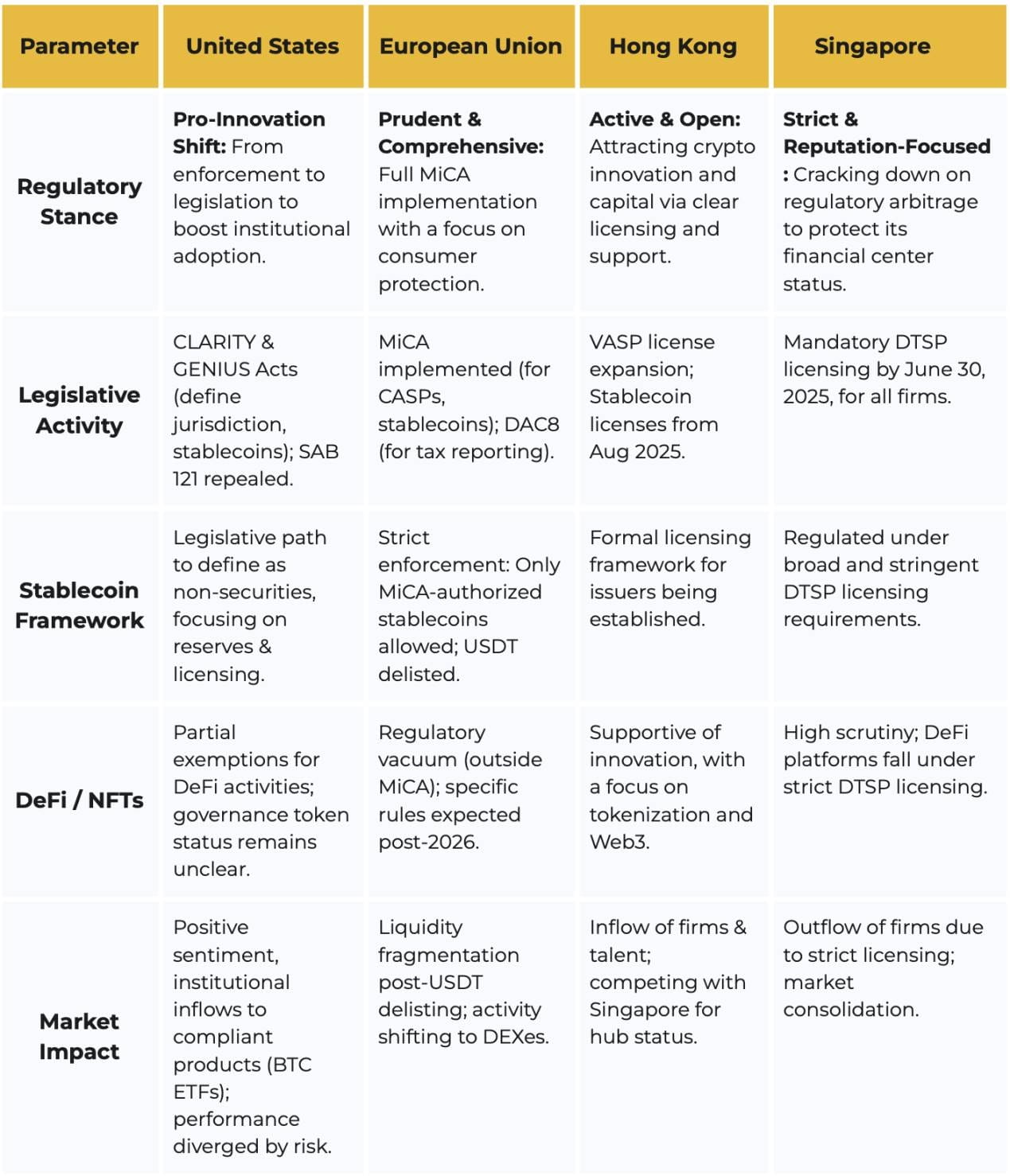
Major cryptocurrency regulatory policies in the first half of 2025
United States: Shifting from "law enforcement supervision" to "legislative leadership", the (CLARITY Act) and (GENIUS Act) clarify the classification of digital assets and stablecoin rules, and promote compliance entry by institutions.
EU: MiCA is fully implemented, USDT is removed from some exchanges due to non-compliance, and the share of compliant stablecoins such as USDC increases.
Asia: Hong Kong attracts innovation through open licenses and tax incentives; Singapore cracks down on regulatory arbitrage, leading to corporate relocation.
Outlook for the second half of the year
The Federal Reserve's policy shift, the advancement of U.S. crypto legislation, the wave of TradFi and crypto mergers and acquisitions, the penetration of stablecoin payments, and the outbreak of RWA will dominate the direction of the crypto market in the second half of the year.
